Sedimentary Genesis and Model Analysis of Shale Lithofacies in Jiyang Depression
Abstract
:1. Introduction
2. Basic Geological Situation of the Study Area
3. Shale Facies Type and Characteristics
4. Sedimentary Genesis of Shale
4.1. Microstructural Sedimentary Genesis
4.2. Sedimentary Genesis of Rock Components
4.2.1. Sedimentation Mechanism of Rock Components
4.2.2. The Indicative Significance of Sedimentary Environment of Rock Components
5. Shale Lithofacies Sedimentary Model
6. Conclusions
- (1)
- Based on the sedimentary structure, mineral component, and organic matter, the lithofacies division scheme of the “four-component and three-end-element” shale is proposed. The shale in the upper part of Sha 4–lower part of Sha 3 in Jiyang Depression is divided into 17 main lithofacies types, such as oil-mud (shale) and shale-lime (cloud) clay.
- (2)
- Through research on the microstructure and composition of shale rocks, the results indicate that the muddy shale in the upper submember of Sha 4–lower submember of Sha 3 has sedimentary zoning characteristics, including muddy water desalination deposit in muddy water area, clean water brackish deposit in the transition area, and water brackish deposit in clean water area.
- (3)
- Considering the combined effects of climate, topography, fluid mechanics, mechanical and chemical differentiation of sediments, and biological habits, a sedimentary model of shale is established, which indicates each lithofacies type’s sedimentary climate, redox conditions, sedimentary location, and so on. For example, the muddy shale is rich in organic matter and formed in the transition period of dry-hot climate and humid climate or humid climate, deposited in the water medium conditions of static water, brackish water, strong reduction, and stratification of water body, distributed in the end in the clean water area of the muddy water area far away from coarse clastic materials, and enriched in the low-lying part of paleotopography. This is of great significance for finding favorable lithofacies and guiding the exploration and development of shale oil.
Author Contributions
Funding
Data Availability Statement
Conflicts of Interest
References
- Ghadeer, S.G.; Macquaker, J.H. Sediment transport processes in an ancient mud-dominated succession: A comparison of processes operating in marine offshore settings and anoxic basinal environments. J. Geol. Soc. Lond. 2011, 168, 1121–1132. [Google Scholar] [CrossRef]
- Plint, A.G. Mud dispersal across a Cretaceous prodelta: Stormgenerated, wave-enhanced sediment gravity flows inferred from mudstone micro-texture and microfacies. Sedimentology 2014, 61, 609–647. [Google Scholar] [CrossRef]
- Zou, C.N.; Zhu, R.K.; Wu, S.T.; Yang, Z.; Tao, S.Z.; Yuan, X.J.; Hou, L.H.; Yang, H.; Xu, C.C.; Li, D.H.; et al. Types, characteristics, genesis and prospects of conventional and unconventional hydrocarbon accumulations: Taking tight oil and tight gas in China as an instance. Acta. Petrol. Sin. 2012, 33, 173–187. [Google Scholar]
- Zou, C.N.; Zhang, G.Y.; Tao, S.Z.; Su, Y.H.; Li, X.D.; Li, J.Z.; Dong, D.Z.; Zhu, R.K.; Yuan, X.J.; Hou, L.H.; et al. Geological features, major discoveries and unconventional petroleum geology in the global petroleum exploration. Pet. Explor. Dev. 2010, 37, 129–145. [Google Scholar]
- Huang, J.L.; Zou, C.N.; Li, J.Z.; Dong, D.Z.; Wang, S.; Wang, S.Q.; Cheng, K.M. Shale gas generation and potential of the lower Cambrian Qiongzhushi formation in Southern Sichuan basin, China. Pet. Explor. Dev. 2012, 39, 69–75. [Google Scholar] [CrossRef]
- Wu, S.T.; Zou, C.N.; Zhu, R.K.; Yuan, X.J.; Yao, J.L.; Yang, Z.; Sun, L.; Bai, B. Reservoir quality characterization of Upper Triassic Chang 7 shale in Ordos basin. Earth Sci. 2015, 40, 1810–1823. [Google Scholar]
- Li, J.; Yu, B.S.; Xia, X.H.; Tian, Y.K.; Li, Y.L.; Zhou, H.; Ma, Y.S. The characteristics of the upper Permian shale reservoir in the northwest of Guizhou province, China. Earth Sci. 2015, 22, 301–311. [Google Scholar]
- Luo, X.P.; Wu, P.; Zhao, J.H.; Yang, N. Study advances on organic pores in organic matter-rich mud shale. J. Chengdu Univ. Technol. 2015, 42, 50–57. [Google Scholar]
- Yang, C.; Zhang, J.C.; Li, W.J.; Jing, T.Y.; Sun, R.; Wang, Z.P.; He, W.; Lu, Y.Y. Microscopic pore characteristics of Sha-3 and Sha-4 shale and their accumulation significance in Liaohe Depression. Oil Gas Geol. 2014, 35, 286–294. [Google Scholar]
- Zeng, X.; Cai, J.G.; Dong, Z.; Wang, X.J.; Hao, Y.Q. Sedimentary characteristics and hydrocarbon generation potential of mudstone and shale: A case study of Middle submember of member 3 and upper submember of member 4 in Shahejie formation in Dongying sag. Acta. Petrol. Sin. 2017, 38, 31–41. [Google Scholar]
- Niu, L.; Zhu, R.K.; Wang, L.S.; Bai, B.; Wang, T.; Cui, J.G. Characteristics and evolution of the Meso-Neoproterozoic shale gas reservoir in the northern North China. Acta. Petrol. Sin. 2015, 36, 664–672. [Google Scholar]
- Er, C.; Luo, A.X.; Zhao, J.Z.; Zhang, Z.Y.; Bai, Y.B.; Cheng, D.X.; Wu, S.T.; Wei, Z.K.; Zhang, J. Lithofacies features of organic-rich shale of the Triassic Yanchang Formation in Huachi area, Ordos Basin. Earth Sci. Front. 2016, 23, 108–117. [Google Scholar]
- Cao, X.N.; Jiang, Z.X.; Zhu, D.Y.; Qiu, H.Y.; Chen, L.; Luo, D.D.; Shuang, Z.J.; Li, W.B. Lithofacies types and reservoir characteristics of continental shales of Ziliujing Formation in northeastern Sichuan Basin. Nat. Gas Geosci. 2019, 30, 1782–1793. [Google Scholar]
- Wang, L.; Zeng, W.T.; Xia, X.M.; Zhou, H.Y.; Hua, H.; Shang, P.; Zhou, X.X. Study on lithofacies types and sedimentary environment of black shale of Qingshankou Formation in Qijia-Gulong Depression, Songliao Basin. Nat. Gas Geosci. 2019, 30, 1125–1133. [Google Scholar]
- Kang, J.H.; Wang, X.Z.; Xie, S.Y.; Zeng, M.D.; Du, Y.; Zhang, R.; Zhang, S.M.; Li, Y. Lithofacies types and reservoir characteristics of shales of Jurassic Daanzhai member in central Sichuan Basin. Lithol. Reserv. 2022, 34, 53–65. [Google Scholar]
- Dong, C.M.; Lin, C.Y.; Sun, X.; Yuan, M.Y. A method of classification of shale set. J. China Univ. Pet. 2015, 39, 1–6. [Google Scholar]
- Liu, H.M.; Wang, Y.; Yang, Y.H.; Zhang, S. Sedimentary Environment and Lithofacies of Fine—Grained Hybrid Sedimentary in Dongying Sag: A Case of Fine—Grained Sedimentary System of the Es4. Earth Sci. 2020, 45, 3543–3555. [Google Scholar]
- Hu, Z.Q.; Wang, R.Y.; Liu, Z.B.; Feng, D.J.; Yang, Z.H.; Wang, P.W. Source-reservoir characteristics and coupling evaluations for the Lower Jurassic lacustrine shale gas reservoir in the Sichuan Basin. Earth Sci. Front. 2021, 28, 261–272. [Google Scholar]
- Sun, B. Evaluation of Geological Sweet Spot of Shale Oil: A Case Study of the Second Member of Funing Formation in Haian Sag, Subei Basin. Available online: https://kns.cnki.net/kcms/detail/detail.aspx?doi=10.27643/d.cnki.gsybu.2021.001369&dbcode=CMFD (accessed on 29 May 2023).
- Zeng, B.; Liu, X.P.; Liu, G.Y.; Wang, S.C.; Li, G.Y. Logging identification and prediction of lithofacies of lacustrine shale system in Shichang Sub-Sag, Nanpu Depression. Bull. Geol. Sci. Technol. 2021, 40, 69–79. [Google Scholar]
- Liu, H.M.; Zhang, S.; Wang, X.J.; Zhang, P.F.; Li, J.L.; Wang, Y.; Wei, X.L.; Yin, Y.; Zhu, D.Y. Types and Characteristics of Shale Lithofacies Combinations in Continental Faulted Basins: A Case Study from Upper Sub-Member of Es4 in Dongying Sag, Jiyang Depression. Earth Sci. 2023, 48, 30–48. [Google Scholar]
- Jin, Z.M.; Tan, X.C.; Tang, H.; Shen, A.J.; Qiao, Z.F.; Zheng, J.F.; Li, F.; Zhang, S.X.; Chen, L.; Zhou, C.G. Sedimentary environment and petrological features of organic-rich fine sediments in shallow water overlapping deposits: A case study of Cambrian Yuertus Formation in northwestern Tarim Basin, NW China. Pet. Explor. Dev. 2020, 47, 476–489. [Google Scholar] [CrossRef]
- Kohl, D.; Slingerland, R.; Arthur, M.; Bracht, R.; Engelder, T. Sequence stratigraphy and depositional environments of the Shamokin(Union Springs) Member, Marcellus Formation, and associated strata in the Middle Appalachian Basin. AAPG Bull. 2014, 98, 483–513. [Google Scholar] [CrossRef]
- Smith, L.B.; Schieber, J.; Wilson, R.D. Shallow-water onlap model for the deposition of Devonian black shales in New York, USA. Geology 2019, 47, 279–283. [Google Scholar] [CrossRef]
- Robert, G.; Stephen, C. Mississippian Barnett Shale: Lithofacies and depositional setting of a deep water shale-gas succession in the Fort Worth Basin, Texas. AAPG Bull. 2007, 91, 579–601. [Google Scholar]
- Deng, H.W.; Qian, K. Sedimentary Geochemistry and Environmental Analysis; Gansu Science and Technology Press: Lanzhou, China, 1993. [Google Scholar]
- Qian, L.J.; Chen, H.D.; Li, L.B.; Xu, S.L.; Ou, L.H. Geochemical characteristics and environmental implications of middle Jurassic Shaximiao formation, western margin of Sichuan basin. Acta Sedimentol. Sin. 2012, 30, 1061–1071. [Google Scholar]
- Zhang, S.; Chen, S.Y.; Tan, M.Y.; Zhang, Y.Y.; Sun, B.B.; Gong, W.L.; Hu, Z.Y.; Hou, Z.S. Characterization of sedimentary microfacies of shale in the lower third sub-member of Shahejie formation, western Dongying Sag. Acta Petrol. Sin. 2014, 35, 633–643. [Google Scholar]
- Zou, C.N.; Dong, D.Z.; Wang, Y.M.; Li, X.J.; Huang, J.L.; Wang, S.F.; Guan, Q.Z.; Zhang, C.C.; Wang, H.Y.; Liu, H.L.; et al. Shale gas in China: Characteristics, challenges and prospects(I). Pet. Explor. Dev. 2015, 42, 689–701. [Google Scholar] [CrossRef]
- Liu, B.; Lv, Y.F.; Meng, Y.L.; Li, X.N.; Guo, X.B.; Ma, Q.; Zhao, W.C. Petrologic characteristics and genetic model of lacustrine lamellar fine-grained rock and its significance for shale oil exploration: A case study of Permian Lucaogou formation in Malang sag, Santanghu Basin, NW China. Pet. Explor. Dev. 2015, 42, 598–607. [Google Scholar] [CrossRef]
- Xu, Z.Y.; Jiang, S.; Xiong, S.Y.; Liang, X.; Wang, G.C.; Guo, Y.L.; He, Y.; Rao, D.Q. Characteristics and Depositional Model of the Lower Paleozoic Organic Rich Shale in the Yangtze Continental Block. Acta Sedimentol. Sin. 2015, 33, 21–35. [Google Scholar]
- Wu, Y.; Fan, T.L.; Ding, H.Y. Lithofacies and Sedimentary Model of the Lower Combrian Marine Shale in the Upper Yangtze Platform. Geoscience 2017, 31, 1222–1232. [Google Scholar]
- Liang, X.C.; Niu, X.; Hu, M.Y.; Li, Y.; Hu, Z.G.; Cai, Q.S. Development characteristics and sedimentary environment of black shale of Lower Cambrian Niutitang Formation in western Hunan and Hubei. Lithol. Reserv. 2023, 35, 102–114. [Google Scholar]
- Chen, L.; Tan, X.C.; Zheng, J.; Chen, X.; Yang, Y.; Xiong, M.; Wang, G.X.; Ji, Y.B. Shallow-water onlap sedimentary mode of black organic-rich shale in the Longmaxi Formation, Upper Yangtze area. J. Palaeogeogr. 2023, 25, 614–627. [Google Scholar]
- Yang, W.Q.; Jiang, Y.L.; Wang, Y. Study on shale facies sedimentary environment of lower Es3-upper Es4 in Dongying sag. J. China Univ. Pet. 2015, 39, 19–26. [Google Scholar]
- Yang, Z.H.; Li, Z.M.; Wang, G.S.; Teng, G.E.; Shen, B.J. Enlightenment from petrology character, depositional environment and depositional model of typical shale gas reservoirs in North America. Geol. Sci. Technol. Inf. 2010, 29, 59–65. [Google Scholar]
- Spears, D.A. Towards a classification of shales. J. Geol. Soc. London 1980, 137, 125–129. [Google Scholar] [CrossRef]
- James, J.; BO, H. Lithofacies summary of the Mississippian Barnett Shale, Mitchell 2 T.P. Sims well, Wise County, Texas. AAPG Bull. 2007, 91, 437–443. [Google Scholar]
- Wang, Y.; Wang, X.J.; Song, G.Q.; Liu, H.M.; Zhu, D.S.; Zhu, D.Y.; Ding, J.H.; Yang, W.Q.; Yin, Y.; Zhang, S.; et al. Genetic connection between mud shale lithofacies and shale oil enrichment in Jiyang Depression, Bohai Bay Basin. Pet. Explor. Dev. 2016, 43, 696–704. [Google Scholar] [CrossRef]
- Zeng, S.Q.; Wang, J.; Fu, X.G.; Feng, X.L.; Chen, W.B.; Sun, W. Characteristic and formation condition of the Cretaceous marine oil shale in the Qiangtang Basin. Geol. Rev. 2014, 60, 449–463. [Google Scholar]
- Zhao, C.L.; Zhu, X.M. Sedimentary Petrology, 3rd ed.; Petroleum Industry Press: Beijing, China, 2000. [Google Scholar]
- Liu, C.L.; Xu, J.L.; Wang, P.X. Algal blooms: The primary mechanism in the formation of lacustrine petroleum source rocks. Geol. Rev. 2014, 60, 449–463. [Google Scholar]
- Bennett, R.H.; Bryant, W.R.; Hulbert, M.H.; Chiou, W.A.; Faas, R.W.; Kasprowicz, J.; Li, H.; Lomenick, T.; O’Brien, N.R.; Pamukcu, S.; et al. Microstructure of Fine-Grained Sediments from Mud to Shale; Springer: Berlin/Heidelberg, Germany, 1991. [Google Scholar]
- Cai, J.G. Organic Clay Complexes in Argillaceous Sediments and Mudstones; Science Press: Beijing, China, 2004. [Google Scholar]


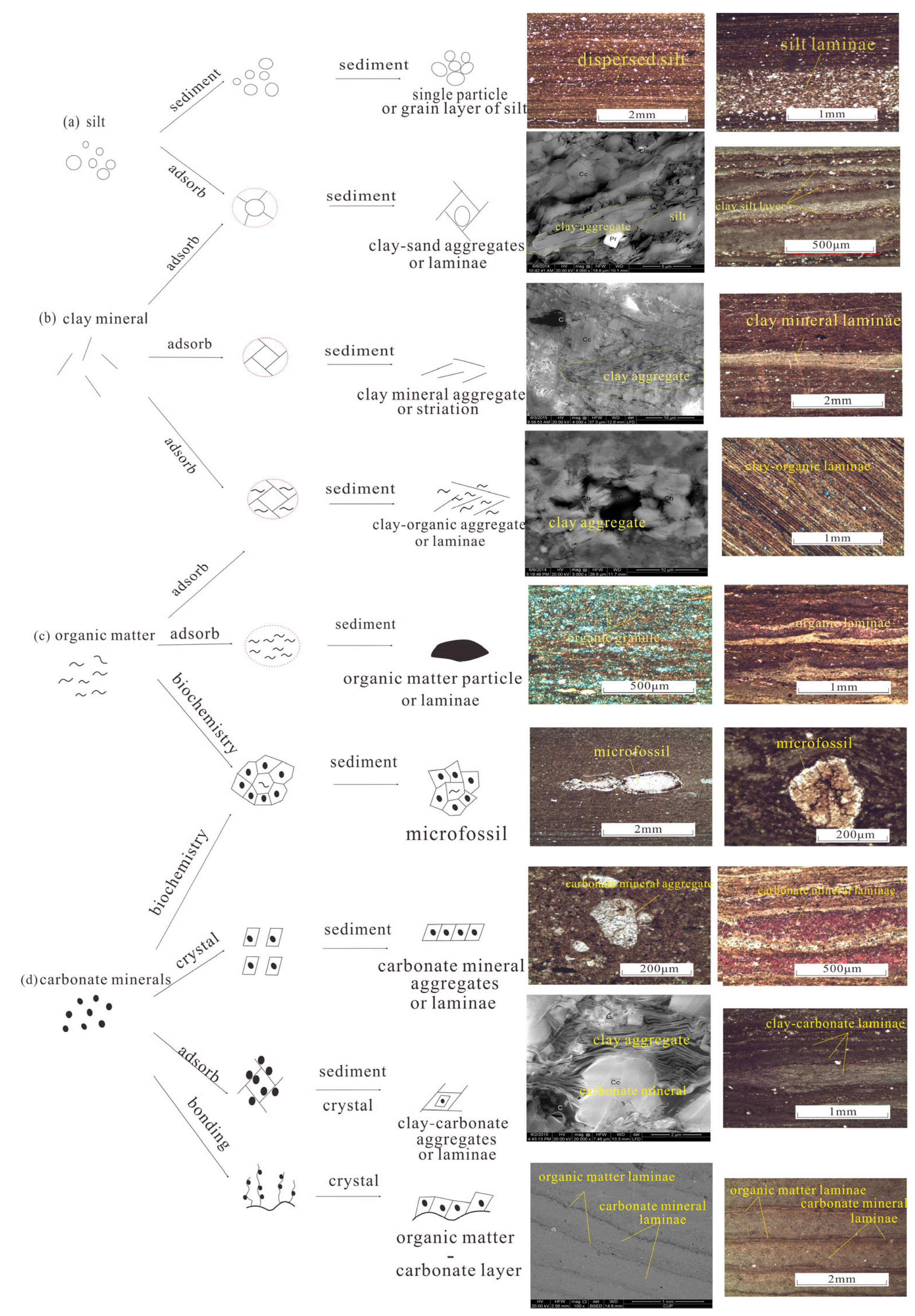
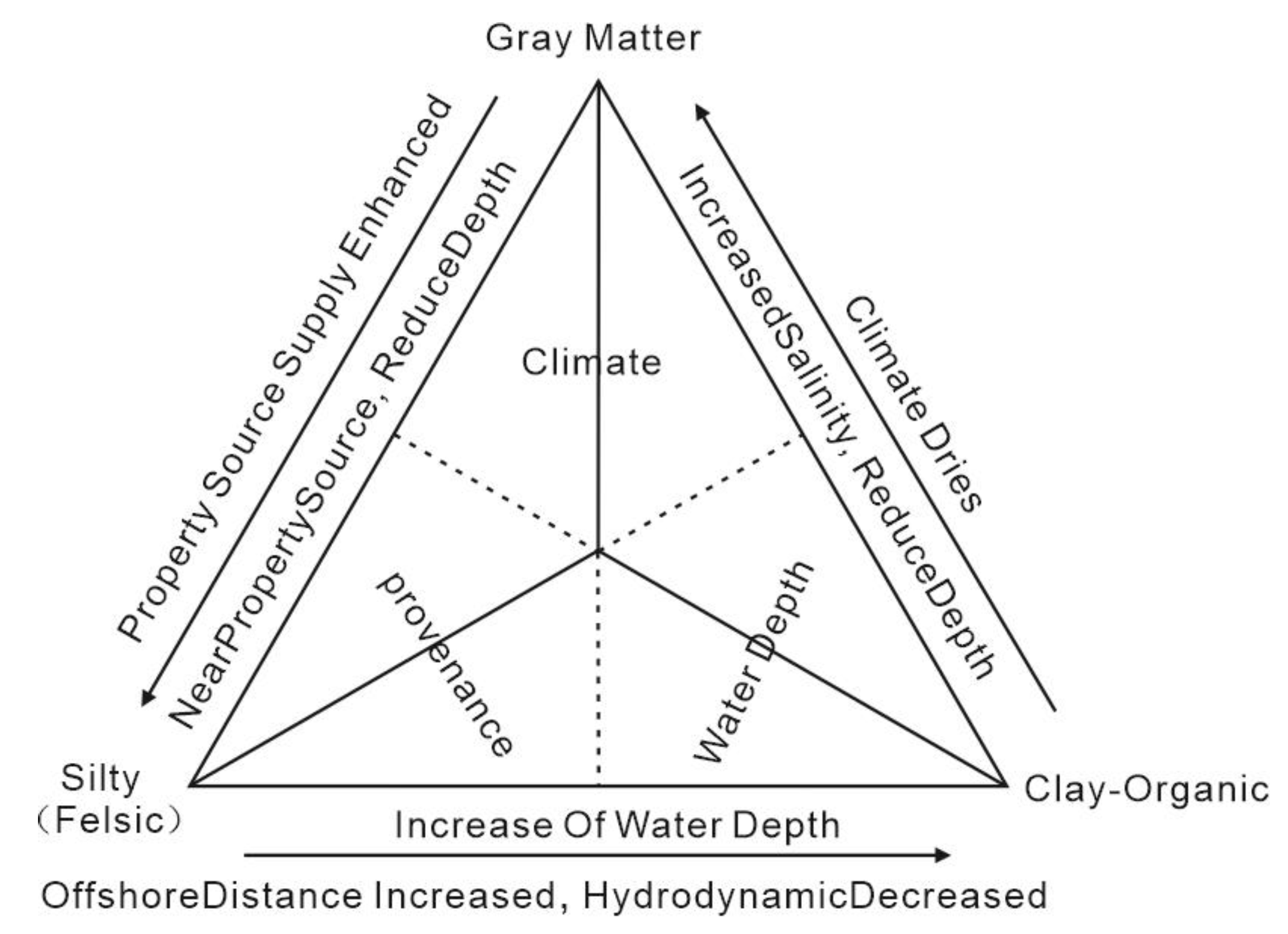
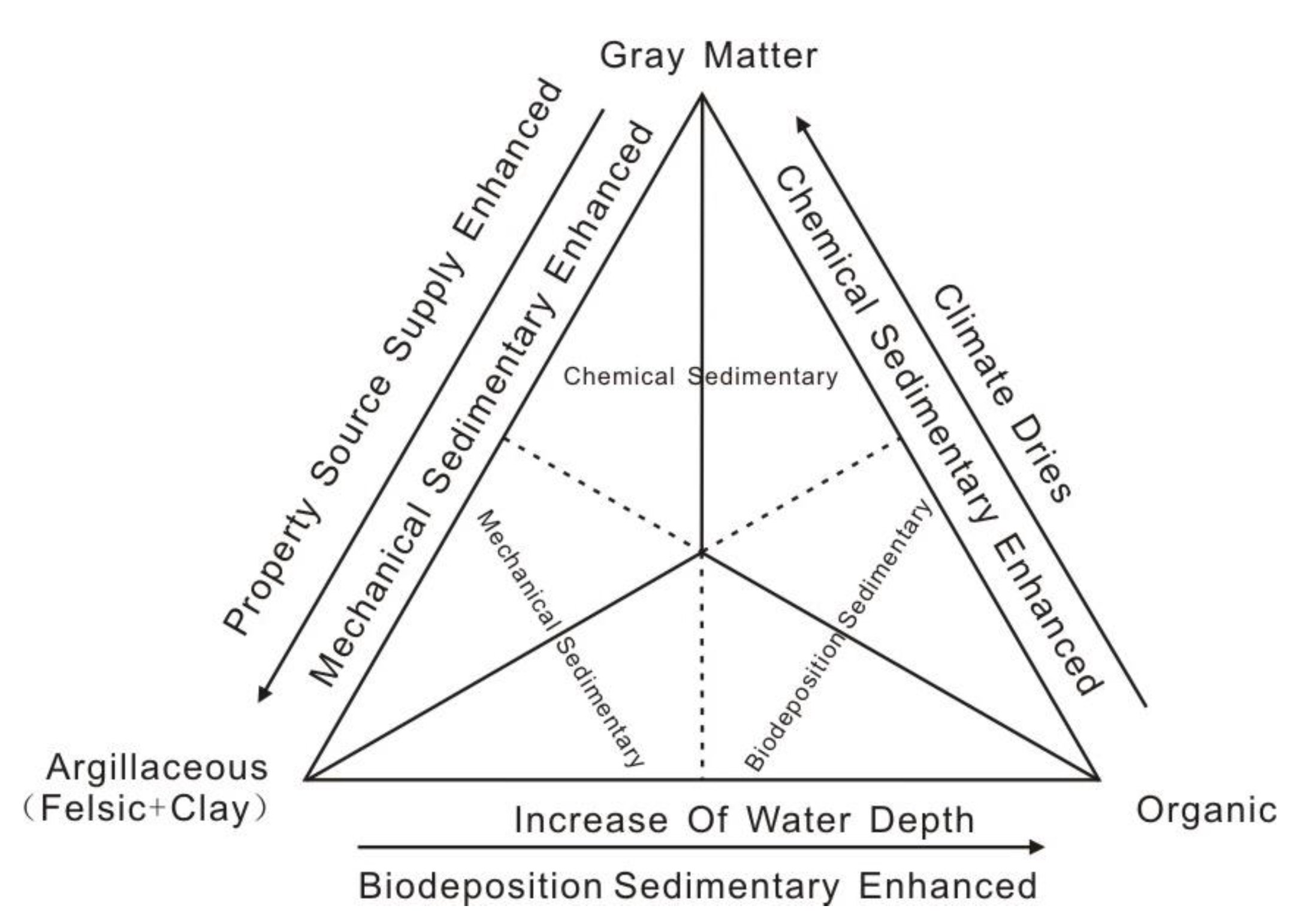

| Lithofacies Name | Core Photos | Photos under the Microscope | Fabric Characteristics |
|---|---|---|---|
| Thin/layered clayey siltstone | 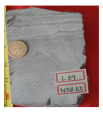 | 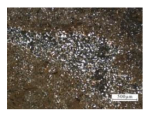 | The silt content is more than 33% and greater than the clay mineral content, the clay mineral content is 25–50%, and the gray (cloud) mineral content is 0–33% and less than the clay mineral content. The color is light, the silt content is the highest, and it is dispersed or banded. |
| Thin/layered silty limestone (dolomite) |  | 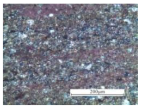 | Silt content is 25–50%, clay mineral content is 0–33% and less than silt, and gray (cloud) mineral content is more than 33% and more than silt. The color is generally light, and the content of silty sand and gray (cloud) minerals is very high, which is banded. |
| Thin/layered clayey gray (cloud) rock |  |  | The silt content is 0–33% and less than the clay mineral content, the clay mineral content is 25–50%, and the gray (cloud) mineral content is greater than 33% and greater than the clay mineral content. Light color, low organic matter content, and uniform mineral distribution. |
| Layered/shale clayey gray (cloud) rock | 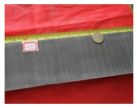 |  | The silt content is 0–33% and less than the clay mineral content, the clay mineral content is 25% to 50%, and the gray (cloud) mineral content is more than 33% and greater than the clay mineral content. The color is dark and the foliation is developed. It is composed of dark organic rich lamina and light carbonate rich lamina alternately. |
| Thin/layered silty clay rock |  |  | The silt content is 25–50%, the clay mineral content is greater than 33% and greater than the silt content, and the gray (cloud) mineral content is 0–33% and less than the silt content. Minerals are evenly distributed. |
| Layered/shale silty clay rock |  |  | Silt content is 25–50%, clay mineral content is greater than 33% and greater than silt, and gray (cloud) mineral content is 0–33% and less than silt. The color is dark and the foliation is developed, which is composed of light silty sand lamina and dark clay lamina. |
| Thin/layered gray (cloud) clay rock |  | 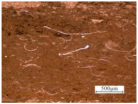 | The content of silty sand is 0–33%, which is less than that of gray (cloud) minerals, the content of clay minerals is more than 33% and greater than that of gray (cloud) minerals, and the content of gray (cloud) minerals is 25–50%. Minerals are evenly distributed and bioclasts is developed. |
| Layered/lamellar gray (cloud) clay rock |  | 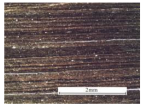 | The content of silty sand is 0–33%, which is less than that of gray (cloud) minerals, the content of clay minerals is more than 33% and greater than that of gray (cloud) minerals, and the content of gray (cloud) minerals is 25–50%. The color is dark, the foliation is developed, and the organic rich dark layer and carbonate-rich shallow layer are alternately developed. |
| Oily mud (shale) rock | 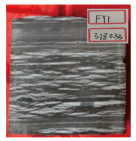 | 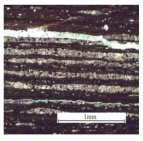 | Rich in organic matter, the total organic carbon content is 4.03–12.8%, with an average value of 6.41%. The contents of silt, clay minerals, and gray (cloud) minerals vary greatly, but generally, the content of gray (cloud) minerals is the largest, accounting for about 50%, and the content of silt is 0–33%, which is slightly larger than that of clay minerals. The color is dark, and calcite veins are often developed. |
| Microstructure Types | Fissile | Orientation | Lumpy |
|---|---|---|---|
| Layer display | Muddy laminae, calcareous laminae or organic-rich laminae are shown alternately. The bedding interface is straight, clear, and continuous | Mud, carbon, organic matter, bioclasts or terrigenous clasts are directionally distributed along the bedding interface is fractured or not obvious | Evenly distributed or indistinctly oriented |
| Bedding continuity | Continuous | Intermittent | None |
 | |||
| Sedimentary Division | Tectonic Position | Source Effect | Hydrodynamic Features | Water Body Salinity | |
| Muddy water area | Margin of lake basin | Strong | Hydrodynamic, Influence of river | Brackish water, freshwater injection | |
| Transitional zone | Basin slope | Medium | Medium hydrodynamic, developed upwelling, combined with rivers and waves | Brackish water | |
| Clear water Zone | Lake basin center | Weak | Weak hydrodynamic force, stratification of water body, wave influence | Brackish. | |
| Oxidation Reductive | Deposition Mechanism | Bedding Structure | Rocks Type | Deposition Type | |
| Weak oxidation Weak reduction | Mechanical deposition | Lamellar | Sandstone, siltstone, argillaceous siltstone, silty clay rock, clay rock | Muddy water desalination deposit | |
| Restore | Mechanical, chemical and biological deposits | Thin and laminated | Oolitic limestone, oolitic clay rock, biological limestone, marlite, limestone clay rock, silty clay rock, clay rock | Brackish sedimentation of purified water | Salinization sedimentation |
| Strong reduction | Chemical and biological deposits | Page | Oily (shale) rock | Salinization sedimentation | |
Disclaimer/Publisher’s Note: The statements, opinions and data contained in all publications are solely those of the individual author(s) and contributor(s) and not of MDPI and/or the editor(s). MDPI and/or the editor(s) disclaim responsibility for any injury to people or property resulting from any ideas, methods, instructions or products referred to in the content. |
© 2023 by the authors. Licensee MDPI, Basel, Switzerland. This article is an open access article distributed under the terms and conditions of the Creative Commons Attribution (CC BY) license (https://creativecommons.org/licenses/by/4.0/).
Share and Cite
Ma, C.; Liu, S.; Zhao, Q.; Fan, Y.; Qian, Y.; Liu, X.; Ge, X. Sedimentary Genesis and Model Analysis of Shale Lithofacies in Jiyang Depression. Processes 2023, 11, 2302. https://doi.org/10.3390/pr11082302
Ma C, Liu S, Zhao Q, Fan Y, Qian Y, Liu X, Ge X. Sedimentary Genesis and Model Analysis of Shale Lithofacies in Jiyang Depression. Processes. 2023; 11(8):2302. https://doi.org/10.3390/pr11082302
Chicago/Turabian StyleMa, Cunfei, Shuangpeng Liu, Qi Zhao, Yongjun Fan, Yaoyao Qian, Xiantai Liu, and Xinmin Ge. 2023. "Sedimentary Genesis and Model Analysis of Shale Lithofacies in Jiyang Depression" Processes 11, no. 8: 2302. https://doi.org/10.3390/pr11082302
APA StyleMa, C., Liu, S., Zhao, Q., Fan, Y., Qian, Y., Liu, X., & Ge, X. (2023). Sedimentary Genesis and Model Analysis of Shale Lithofacies in Jiyang Depression. Processes, 11(8), 2302. https://doi.org/10.3390/pr11082302






